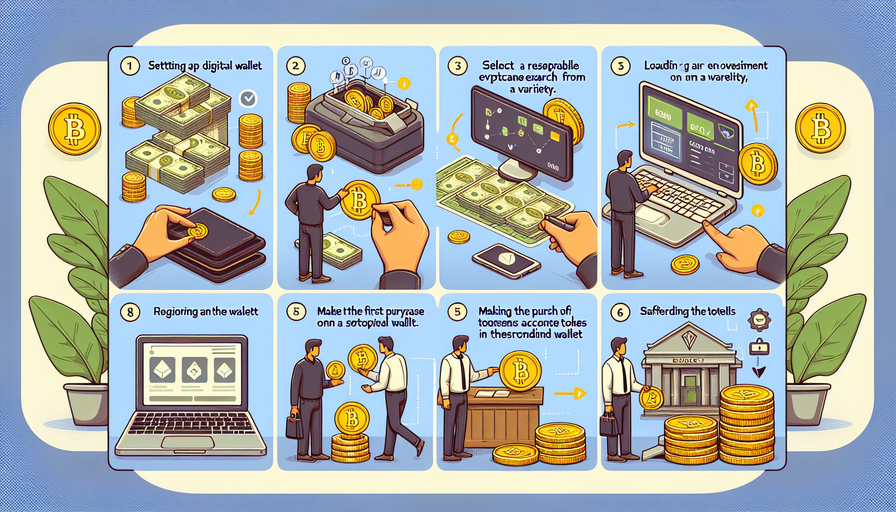In today’s digital age, online marketplaces have become a popular platform for individuals and businesses to buy and sell goods. Among these platforms, eBay stands out as one of the largest and most well-known online marketplaces in the world. With millions of users and a wide range of products available, eBay offers a unique opportunity for sellers to reach a global audience and grow their business.
If you’re looking to start selling on eBay or improve your existing sales strategy, this comprehensive guide will provide you with valuable insights and tips on how to succeed in the competitive world of online selling.
Setting Up Your eBay Account
The first step to selling on eBay is creating an account. If you don’t already have one, you can easily sign up for a seller account by providing some basic information about yourself or your business. Make sure to choose a username that is professional and easy to remember.
Once your account is set up, it’s important to familiarize yourself with eBay’s policies and guidelines for sellers. This includes understanding fees, payment methods, shipping options, and return policies. By following these guidelines, you can ensure a smooth selling experience and build trust with your customers.
Choosing What to Sell
Before listing any items for sale on eBay, take some time to research what products are in demand and which categories are popular among buyers. You can use tools like eBay’s “What’s Hot” feature or third-party research tools to identify trending products and niche markets.
When selecting items to sell, consider factors such as profit margins, competition levels, shipping costs, and market demand. It’s also important to choose products that align with your interests or expertise as this can help you create more compelling listings and provide better customer service.
Creating Compelling Listings
One of the keys to success on eBay is creating compelling listings that attract buyers’ attention. When creating a listing, make sure to include high-quality photos of the item from multiple angles, detailed descriptions including measurements or specifications if applicable, accurate pricing information, and clear shipping terms.
Additionally, using keywords strategically in your listing title and description can help improve visibility in search results. Think about what terms potential buyers might use when searching for your product and incorporate those keywords naturally into your listing.
Pricing Strategies
Determining the right price for your items is crucial when selling on eBay. Researching similar listings can give you an idea of what price point is competitive while still allowing you to make a profit. Consider factors such as item condition, brand reputation, rarity, and market demand when setting prices.
You may also want to experiment with different pricing strategies such as auctions versus fixed-price listings or offering discounts for bulk purchases. Keep track of how different pricing strategies impact your sales performance so you can refine your approach over time.
Managing Customer Service
Providing excellent customer service is essential for building trust with buyers on eBay. Respond promptly to inquiries from potential customers, address any issues or concerns they may have during the buying process quickly and professionally,
Make sure all items are packaged securely before shipping them out promptly after receiving payment confirmation from the buyer.
Encourage feedback from satisfied customers by leaving positive reviews once they receive their purchase.
Handling returns or refunds gracefully can also help maintain positive relationships with buyers even if something goes wrong with their purchase.
By prioritizing customer service throughout the selling process,
you can establish a strong reputation as a reliable seller on eBay
Promoting Your Listings
To increase visibility for your listings on eBay,
consider investing in promotional tools offered by the platform such as promoted listings
or running special promotions like discounts or free shipping
Utilize social media platforms like Facebook,
Instagram,
or Twitter
to promote your listings outside of eBay
Collaborate with influencers or bloggers who cater
to your target audience
to showcase your products
Participate in community forums or groups related
to your niche market
and engage with potential buyers through discussions,
recommendations,
or sharing relevant content
By actively promoting your listings both within
and outside of eBay,
you can attract more potential buyers
and increase sales opportunities
Conclusion
Selling on ebay requires dedication,
strategic planning,
and continuous effort but by following best practices outlined above,
you can position yourself for success in this competitive marketplace Take advantage of ebay’s vast reach global audience diverse product categories And robust seller tools To grow Your business And maximize Your earning potential Happy Selling!


